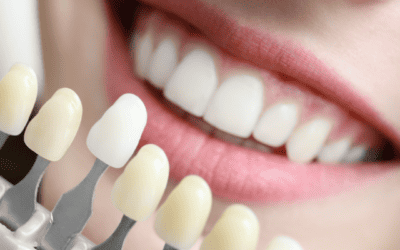What is World Cavity-Free Future Day?
World Cavity-Free Future Day (WCFFDay), 14th October, began in 2016 as an initiative by the Alliance for a Cavity-Free Future (ACFF). Its mission is to address the need for greater global awareness of dental caries, the disease which, when left unaddressed, can lead to dental cavities.
By taking control of your own oral health, starting by brushing twice a day with fluoride toothpaste and reducing frequency of sugar intake, you are taking a key step on the road towards reducing the number of people who develop cavities and helping secure a cavity-free future for generations to come.

Beautiful healthy smile.
What is Dental Caries?
Dental Caries means tooth decay. This is where the hard tissues of the teeth (the enamel and the dentine) dissolve (demineralise) at a faster rate than the tooth can replenish those minerals (remineralisation). Left untreated, dental caries can result in lesions (cavities) in the teeth.
According to the World Health Organization (WHO), worldwide, 60–90% of school children and nearly 100% of adults have dental cavities.
Dental caries is the most common, preventable chronic disease on the planet.
However, it remains largely untreated, causing problems such as:
- Pain and discomfort, which can lead to missed days of school or work or decreased participation in school, work and social activities
- Financial stress due to costly treatment cycles (which may be an even heavier burden on the vulnerable populations who suffer from higher rates of cavities)

Fillings restoring cavities.
How does it happen?
Our mouths are home to many different types of bacteria, which, when we are healthy, are in balance (see previous blog ‘Why does oral health matter?’)
1.Plaque formation:
When we eat and drink, bacteria build up and form a layer that we call plaque. This most commonly happens on irregular surfaces such as in cracks, around fillings or other dental work, between teeth and near the gum line. The plaque bacteria feed on carbohydrates and starches in the foods that we eat and produces acids. These acids can cause demineralisation.
Removing the plaque layer (brushing and flossing), by having stronger enamel (through the use of fluoride) or limiting the plaque bacteria’s supply of carbs (through a healthy diet), you can tip the balance of demineralization, back to remineralization and prevent cavities.
This constant see-saw from demineralization to remineralization is happening all the time.
However, if this demineralisation happens faster than our teeth can recover from it, the see-saw will tip to the demineralization side and the caries process will begin.
2. Initial-Stage Caries:
The acids produced by the plaque bacteria begin to dissolve the minerals in the hard enamel that covers the teeth. This stage is still reversible and you have the potential to tip the balance back to remineralisatio.
3. Moderate-Stage Caries:
As acid continues to dissolve the teeth, microscopic pits in the enamel can form, which quickly grow as they continue to erode. This stage is particularly risky for exposed roots of teeth, as they don’t have enamel and are more susceptible to decay.

Decay reaching the dental pulp where the nerves and
blood vessels lie. This means more complex treatment,
or extraction of the tooth.
4. Extensive-Stage Caries:
Once the outer enamel layer is damaged, the caries process and plaque acids can now penetrate the softer dentine (inner) layer of the tooth. As the dentin and enamel break down, a visible cavity is created.
This means that the actual hole in your tooth is not formed until the last stage of the caries process, i.e by the time you may realise something is wrong, it can be too late.
At this stage, if the cavity is not treated, the decay in the dentine will continue to spread and will eventually get into the tooth’s inner layer, which contains the nerve fibres and blood vessels. Once this layer is affected, it can lead to extreme pain and infection, resulting in more complicated treatment or extraction of the tooth.
Can caries be prevented?
If we can keep the balance between the demineralisation process and our own natural (such as saliva) or deliberate protective interventions, this cycle need not lead to decay or cavities.

Prevention: regular check-ups and cleans
at the dentist.
In order to give your teeth the best chance at remineralising and keeping that balance, you should consider following these four simple steps:
- Balance Bacteria by brushing twice a day to reduce the buildup of plaque.
- Minimise Acid produced by plaque by reducing frequency at which you consume sugary and starchy foods.
- Increase Strength by using a fluoridated toothpaste to help strengthen and remineralise the enamel on your teeth.
- Enhance Protection by seeing your dental professional for regular check-ups and personalised advice on further preventive measures you can put into place to protect your teeth. The early stages of caries are often painless and can only be identified by regular dental examinations. If you experience pain or sensitivity when chewing or from hot, cold or sweet foods or drinks, contact your dentist.
Resources
Great toothbrushing charts and info for families here: https://www.worldcavityfreefutureday.org/family-resources
Cavity prevention advice here: http://family.allianceforacavityfreefuture.org/en/us/cavity-prevention/topics/



